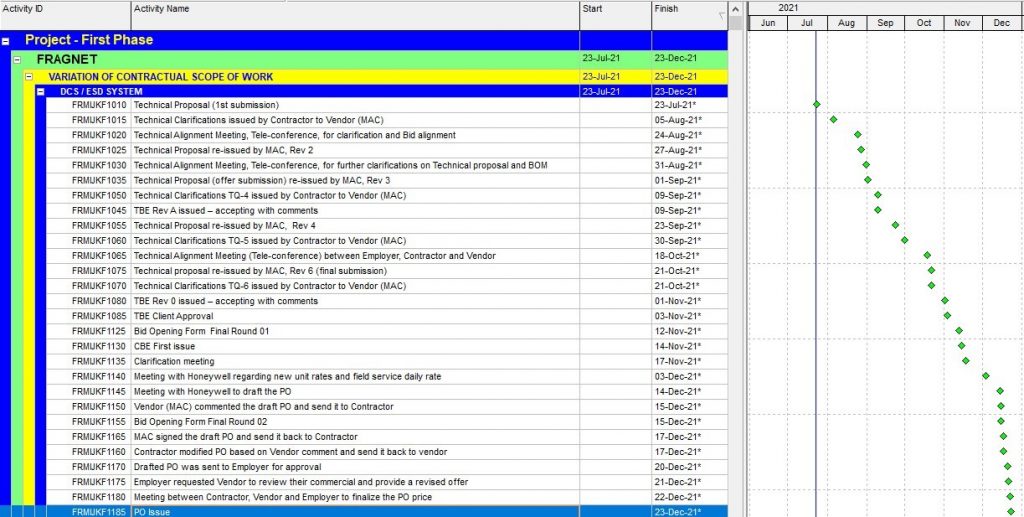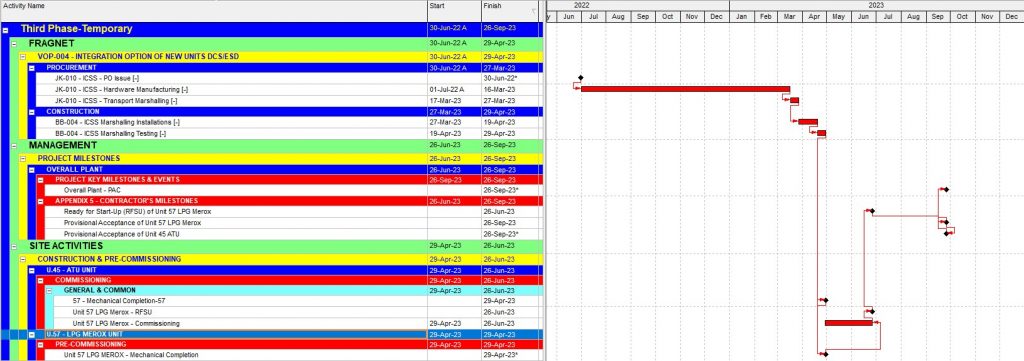AUTHOR: Shahrouz Ghasemian
TUTORS: Ing. Giovanni Franchi
INTERNSHIP: Tecnimont Company
MASTER: Master in “CONTRACT, CLAIM AND DELAY MANAGEMENT IN CONSTRUCTION WORK” a.a 2021/22
Construction industry is flooded with the Fast Track Projects these days and there is always a pressure on the contractor to bid the lowest, resulting in low profit margins. To achieve the dismal profit margins, it requires massive all-round efforts to develop a schedule and control it efficiently.
Delays may occur any time on a project, even with all sincere efforts to control a project and complete on time. Delay means loss of profit and/ or risk of facing liquidated damages. In absence of proper analysis and documentation, the contractor may lose grounds for delay claim, though the delay is due to the sole responsibility of the other parties involved.
Delays and interruption to the contractors’ progress, often leading to time and cost overruns, are a major source of claims and disputes in the construction industry. There is always a controversy and dispute regarding the responsibility of the delay in order to demonstrate which party is responsible for the delay event, Contractor, Employer or neither party? And also, who will own the risks of time and cost overruns due to such excusable delays? and what is the most practical approach to seek an Extension of Time (EOT) under such scenarios?
During my Internship in Tecnimont Company, I was involved in a claim team which was responsible for performing delay analysis for the EPC project, the scope of which includes design, engineering, procurement, construction, commissioning, start-up and testing of Oil Refinery Units. This Project suffered from events beyond the Contractor’s control which brought about slippage on some contractual deadlines; therefore, the team investigate the events and found out that the critical path of the project has been prolonged due to some failure and poor performance of the Employer. Such events consist of Employer’s late approval of documents and instruction to vary the scope of work and also changing the procurement cycle for supplying the piping material. To assess the impacts on the Project, we performed a Time Impact Analysis introducing the new delay events within a dedicated section in the Project Schedule called Fragnet. (Figure 1)
This case study is comprised of 3 main parts:
- For the first part, I have provided an introduction to forensic scheduling analysis.
- In the second part, having analyzed and scrutinized the contract, some information has been provided: including but not limited to type and structure of the Contract, Contractor’s commitment and scope of the work (in particular for Procurement and Construction phase) and Change and Claim procedures.
- in the last part, there is a detailed explanation regarding to history and chronological of events (including significant amount of contemporary record, notices for the occurrence of each event), how the critical path of the project has been affected (figure 2), by applying the Time Impact Analysis method (TIA) and using the Primavera 6 Software, and finally proving the contractor’s entitlement for overall 198 days extension of time (EOT).
In conclusion, this thesis aim to show how the critical path and milestones of the project have been affected by several delay events during the execution of a real project in Oil industry, and how to find and support excusable delays and finally preparation of the request for extension of time (EOT) by applying appropriate delay analysis methodologies, recommended protocols, specific scheduling tools, and valubale lesson learned during the Masters course in order to ensure the claim built is comprehensive and grounded.



